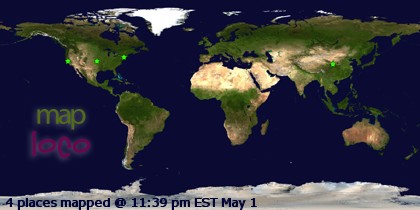 |
| Double moated and heavily fortified. |
 |
| Three cannon in this direction. Standing on top of the gunpowder store |
 |
| Highly protected |
 |
| Cannon from the 1800 |
 |
| Cannon on top of the bastion. 5 on the top |
 |
| 2 m thick walls |
 |
| Long and dark |
 |
| Listening holes along the tunnel |
 |
| 5 cannon pointed at you |
 |
| As the cannon got bigger, they had to move the holes up |
 |
| Guy on top of bastion. Very tall to get over |
 |
| 1877 gate. Now tourist info office and gift shop |
 |
| 1875 former barracks on a ravelin. Now an art gallery. |
 |
| Left to right: Beauty salon, clothing boutique x 2, office |
 |
| The arsenal. Now a "shopping centre" |
 |
| Killer bathroom boutique |
The rest of the town is very pretty, and really nice to walk around.
 |
| The one canal inside the walls |
 |
| The main drag |
 |
| The church in the centre of town |
 |
| Inside the church. Couldn't see more as there was a photo show on |
 |
| City hall. Built in the 1630's |
 |
| Sidestreet |
 |
| A quiet garden |
No, don't rent a bike if all your are going to do is vist Naarden. Walk the 20 min to town; it's easy to find. Turn left coming out of the station, and stay left paralleling the tracks on the bike route for about 10 min. Turn right at the end of the long straight canal like pool, cross the main road and bear right. In 5 min walk you will see the fortifications.
On the other hand, if you do rent a bike, get there early enough to ride the 6 or so km up to Muiden (near Weesp) and go see Muiderslot, a very cool moated castle I have seen in movies but did not have time to visit.
By the way, Naarden's fortifications were never tested. They were built as a result of the Spanish war in 1572 when the Spanish massacred all the adults in town. They kicked a lot of people out over the centuries but were never attacked. The fort was active until 1920 when it was made obsolete with munitions that could penetrate ground and then blow up. In WW2, Allied bombers used the rather distinctive fortification shape as a navigation aid.
Naarden was also one end of the Dutch Water Line. This was a series of defenses first built in the 1630's that could flood a whole lot of the country and make the important places effectively an island. The line proved its value less than forty years after its construction during the Franco-Dutch War of 1672 when it stopped the armies of Louis XIV from conquering the Dutch Republic. It was ready for use until finally being dismantled in 1963, and upgraded on 3 separate occasions, including just after Napoleon's defeat, and just after WW2.


1 comment:
That is so cool!!
Post a Comment